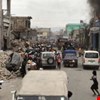
On January 12th, 2010 a 7.0 magnitude earthquake hit a point 15 km southwest of Port-au-Prince, Haiti. It led to more than 230 000 deaths and significant physical destructions. The response actions were limited by the underlying vulnerabilities that existed in the country prior to the event and by a lack of coordination among decision-makers. This study intended to improve the understanding of policy-makers, water and sanitation practitioners and researchers on the actions that have been taken and their outcomes in the water and sanitation sector in Port-au-Prince. It revealed that weak governance coupled with poor infrastructure can result in catastrophic scenarios after the occurrence of a disaster.
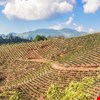
Drought in the central American region is characterized by a variation in rainfall distribution, manifested by a few rainy events among long periods without rainfall within the rainy season. This situation severely affects production cycles of agricultural producers, who heavily rely on rain-fed agriculture and lack adequate technology to face droughts; negatively influencing overall economic and social stability, and wellbeing. In the Honduran agricultural sector, drought mainly manifests itself through crop loss, reduced crop acreage and water supply problems in terms of both quantity and quality. The effects generated have significant impact on the Gross Domestic Product (GDP), which is why this issue is very high up in the political agenda.
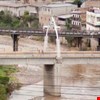
The Cuero River area is particularly susceptible to floods, making the communities living in the surrounding area vulnerable. This area was consequently chosen for implementation of an Early Warning System Project. Action was taken in three separate phases in three different areas. From the experience, the lesson learnt is that more effort should be devoted to training of a leader group that can promote and consolidate the system’s self-sufficiency.

Tourism has placed great pressure on the natural environment of Jamaica. Action was taken through a USAID funded project that aimed to increase water use efficiency and improve environmental management. The key lessons are the value of demonstrating the benefits locally as well as to institutionalise the programme.
Watersheds are essential to the livelihoods of humans. A significant portion of a society’s economic gain and overall survival is acquired through the ecosystem goods and services provided by watersheds. Jamaica as a Small Island Developing State (SIDS) has recently been facing increased stress and vulnerability to its water resources.

Despite high water availability in Jamaica, uneven distribution in both time and space creates local scarcity. Hence, it is problematic to distribute water adequately to all sectors, and to develop abstraction points for water treatment. To address the issues, action was taken and a Water Sector Reform was proposed, including a Water Sector Strategy and Action Plan. From this experience, the lesson learned is the importance of coordinating activities and harmonising policies, legislation and institutions.
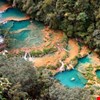
San Juan Olintepeque is a rural municipality located in the Department of Quetzaltenango in the Western Highlands of Guatemala. 44% of its territory is covered by an oak-pine forest (136.15 km2), which is managed by the municipality’s Forest Office. The water supply in the municipality is mainly through mechanical wells. Deforestation has impacts not only on energy availability but on water availability and the hydrological cycle.
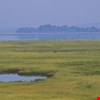
The area around Lake Moyua is experiencing severe soil degradation resulting from inappropriate agricultural practices. To reverse and control the degradation process, an IWRM Plan is implemented. By involving the communities, the aim is to restore the soil, the hydrological systems, forests and biodiversity, as well as the harmonisation of policies and implementation of management regulations. This case study consequently demonstrates the value of a bottom-up approach.
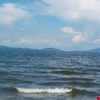
The San Juan River waters have experienced deterioration due to poor management of its basin. To address the issues, action has been taken to implement IWRM to address the areas of water, soil, forests and municipal development in a cross-sectoral manner. This case study is a good reminder of the integrated nature of IWRM, and the importance of a model that accounts for management of both water and land.

River Indio’s watershed is the source of water supply for the growing demand in the metropolitan area of Panamá. However, due to extensive human activity and mismanagement the area has been affected by extensive deterioration. Action has been taken to reinforce natural resources restoration and water resources conservation, grounded in government strenthening and integrated management. Important lessons can be drawn from this in terms of IWRM, as it sets a clear example of active participation of the communities and the local authorities.